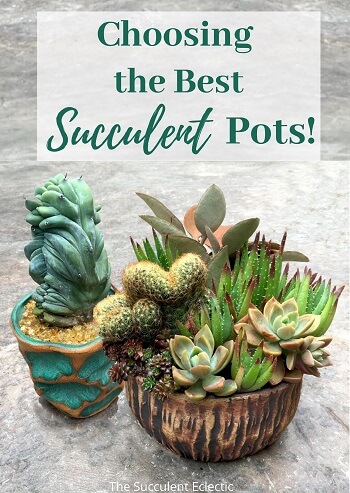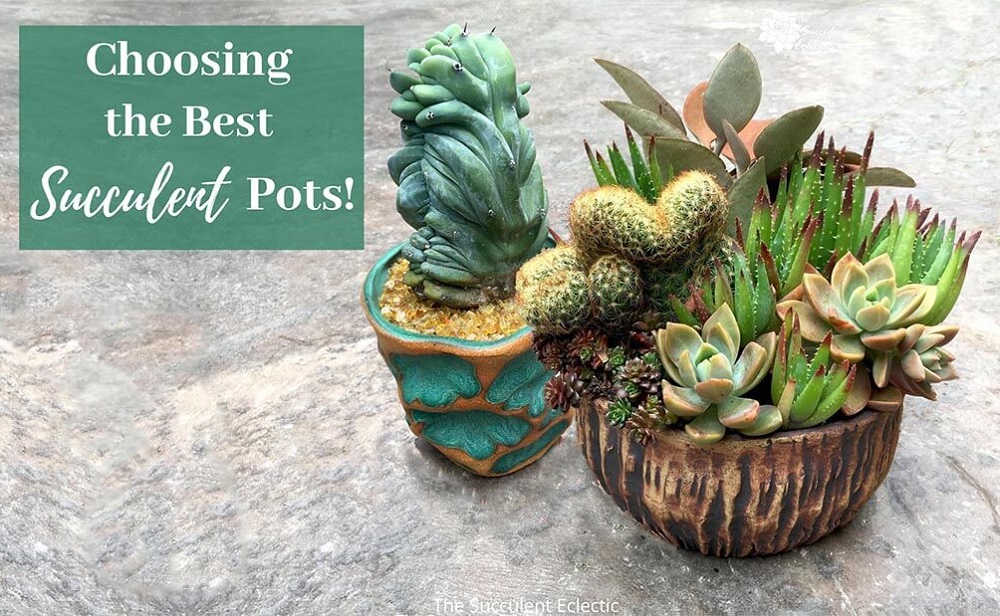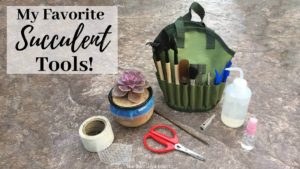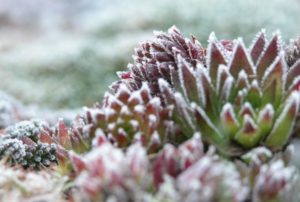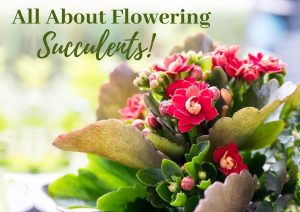Succulents are such tough, resilient plants, they can be grown in a wide range of really unusual situations. You’ve probably seen succulents on pumpkins or planted in eggshells or even growing in geodes. While these whimsical succulent containers are fun, they’re not ideal for the long-term health and vitality of your plants. You can jump straight to a collection of some great succulent pots here. But let’s take a look at how to choose the best succulent pots, with attention to drainage, pot size relative to the plant and the material the pot is made from.
What are the Best Pots for Succulents?
In this Post We'll Cover:
{Please note, some links in this post may be affiliate links to sites that pay me a small commission if you click on the link and make a purchase. This commission is at absolutely no cost to you. I only recommend products and companies that I have worked with and truly love! ~Kat}
Healthy Roots Make for Healthy Plants
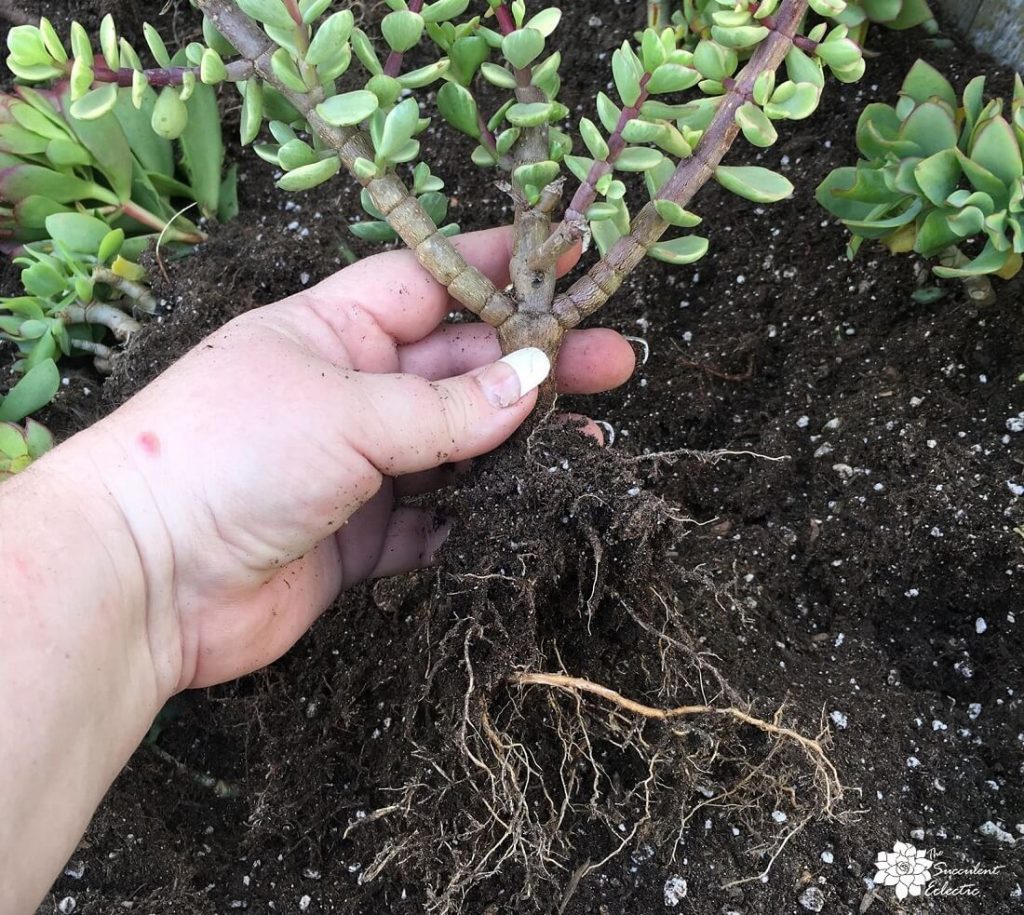
Succulents typically have two kinds of roots. Some will have a tap root — a large, long root that reaches deep into the ground to anchor the plant and to reach deeply buried stores of water. Additionally, succulents also have a network of fine, shallow roots that quickly take up any water that falls to the soil. Any succulent container must allow the plant’s roots to spread out and down.
Roots are vital to the health and productivity of your succulent plants. You know that the roots don’t just anchor a plant in place. They take up water and nutrients from the soil to nourish the plant. Did you know that healthy roots also take in oxygen from the soil and respireTo respire - Respiration is the process where living beings,... More? Soil attracts and fixes oxygen from the exposed surface of the soil (whether or not you use a succulent top-dressing). Some containers, like those made of un-glazed clay or wood, also allow air to come in through the sides of the pot. Without the ability to “breathe”, the succulent’s roots will grow weak and die. Dead roots quickly lead to dead plants, so this is important. The reason an over-watered succulent plant dies is that the roots literally drown from a lack of oxygen. The excess water drives out the available oxygen in the soil, leading to root rot which leads to death.
The health and vitality of any succulent are directly dependent upon the health of its roots. Healthy succulent roots need fast-draining succulent soil that allows the plant to take up moisture, nutrients and oxygen. And, unless the succulent is growing in the earth, the soil needs a container. Choosing the best succulent pots is more than a matter of aesthetics, it is a matter for the health of your plant.
Why Do Succulents Need Drainage?
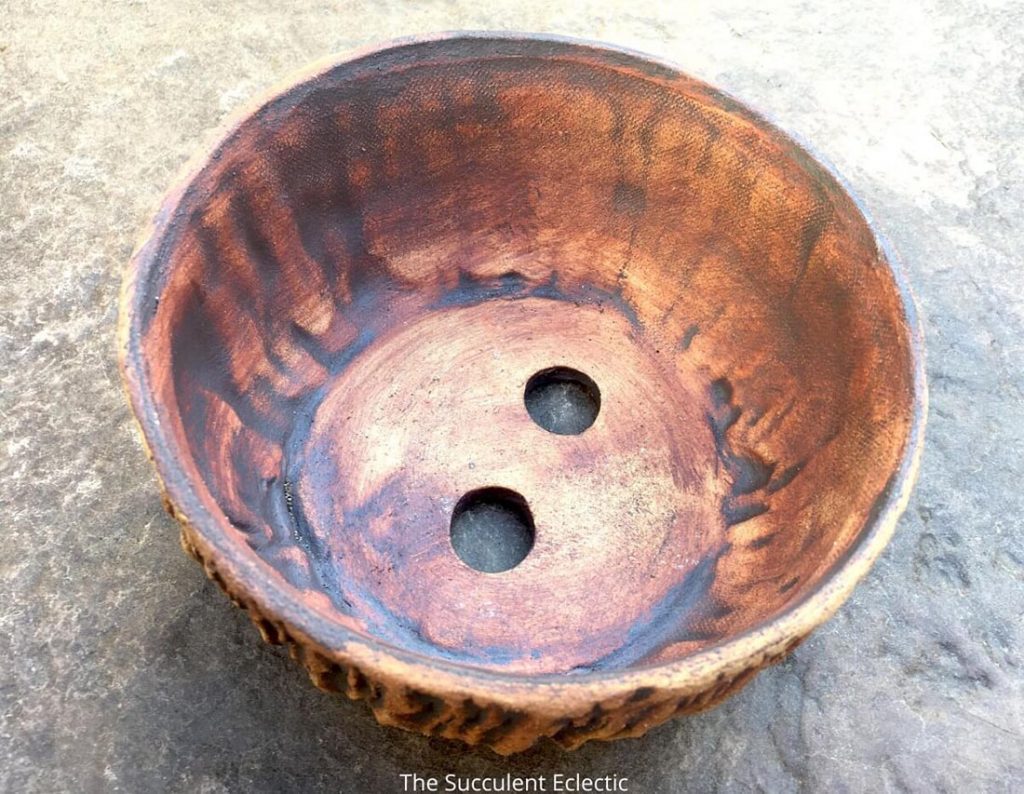
Succulents are plants that have adapted to in growing fast-draining, sandy soils in dry climates. They need similar growing conditions in a container or in your garden in order to thrive. Fast-draining succulent soil is essential for your succulent’s health. And succulent pots with drainage holes ensure the succulent’s roots will remain healthy, thereby supporting a healthy plant. Good drainage ensures the plant’s healthy roots can take up available water quickly without sitting in wet soil, which risks rot.
Yes, succulents can be grown in pots without drainage holes. But it makes the watering trickier and you must be alert to early signs of problems. Without drainage holes, the soil will hold too much water. The water builds up in the soil, driving out the available oxygen, causing root rot, a quick road to death for succulents. Whether you’re new to succulents or you’re struggling to keep a specific favorite alive, always choose a succulent pot with drainage. And if you have a great pot without holes — learn to drill your own drainage!
The pot shown above as well as those at the top of the post are handmade ceramic pots by Susan Aach. I love her work! Not only is her pottery gorgeous and inspiring, but it always features generous drainage holes. I use a piece of drywall mesh tape over the holes to keep the soil in the pots. It is slightly sticky, so it stays in place. The mesh allows water to pass easily, and a single roll does hundreds of pots! You can also use a piece of screen or a coffee filter.
What is the Best Shape for Succulent Pots?
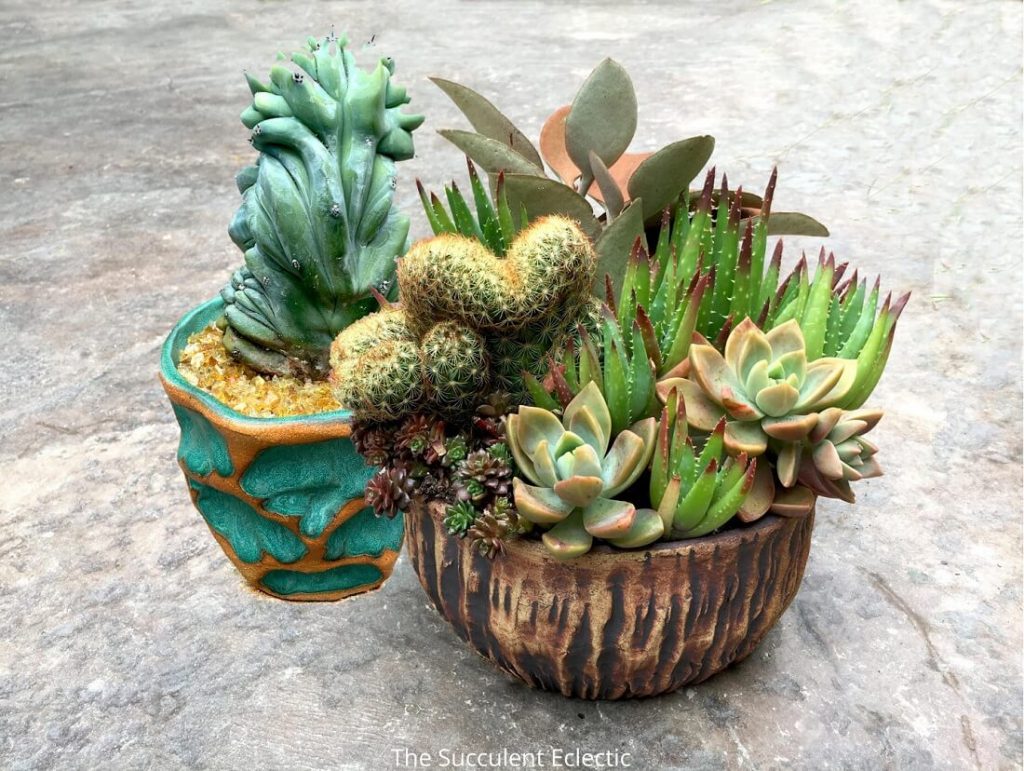
Succulent pots come in all shapes and sizes. And shape matters! Notice how these two pots are smaller as the base than at the opening. As much as I love a bowl shape with a wide curve and a small opening, that shape makes it difficult to remove an established plant from the pot. Roots get hung up on a small opening, requiring that you injure the plant or the pot to remove it. With pots like those above that have a U or a V shape to them, the root ball simply slides right out of the container when it is time to rejuvenate the arrangement or to transplant the succulents.
What Size is Best for Succulent Pots?
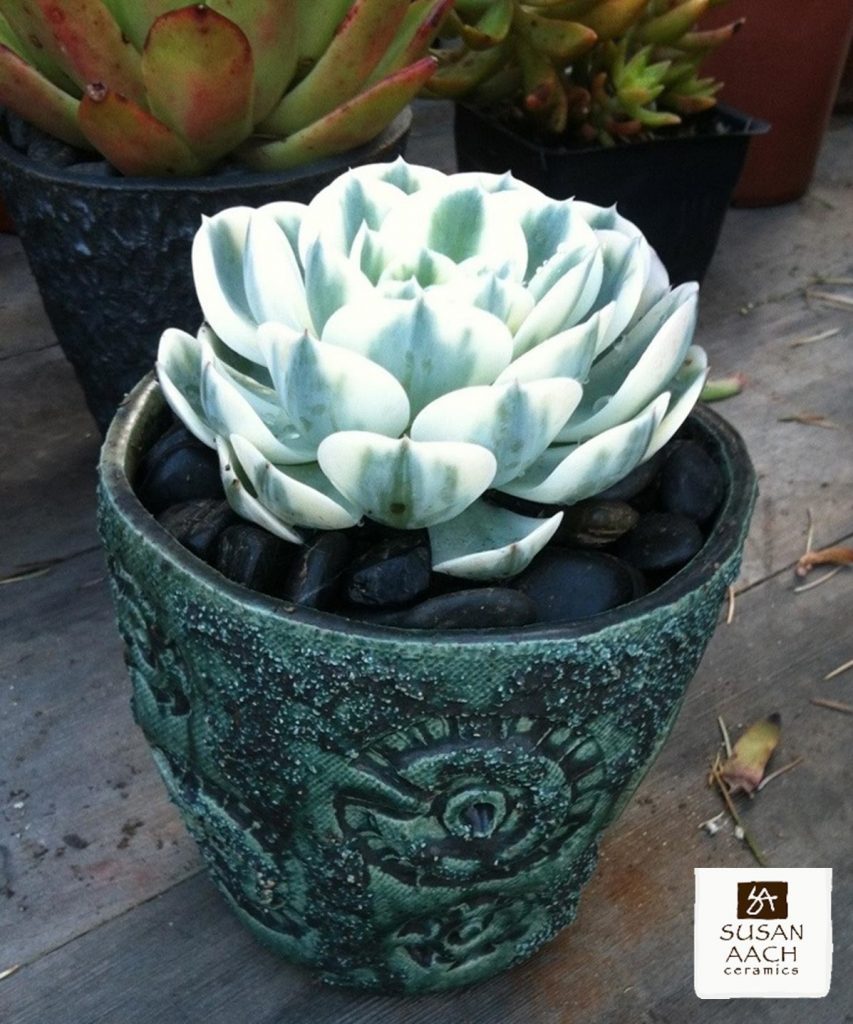
So what size pot should you use when planting your succulents? This is a deceptively simple question that depends upon the type, size and number of the succulents you will plant. But in general, you don’t want the size pot to be too much larger than the succulent you plant. A 3-inch pot is perfect for a 2.5-inch plant. A 4.5-inch pot is a good choice for a 4-inch plant. Typically, I use an actual rule of thumb for the pot size — a pot that allows the width of your thumb between the plant and the pot rim is a good choice. The photo above demonstrates how visually appealing this ratio is, too. My thanks to Susan Aach for the use of her photo of Echeveria Compton Carousel in one of her gorgeous handmade ceramic pots!
Why does size matter when choosing the best succulent pots? The pot holds the soil the plant’s roots will grow in. The larger the pot, the more soil it contains. A pot just a thumb’s width larger than the plant gives the succulents’ roots room to grow into, allowing the plant to grow larger. A smaller pot will confine the roots too tightly to allow the succulent to grow at its regular rate. With a pot that is too large, there is far too much excess soil that collects and holds excess water. Without enough roots growing throughout the soil to make use of the moisture, the soil remains too wet, risking root rot. This is a danger even in a pot with good drainage holes.
So then what size pot should you use with multiple succulents? While I really love the very full, over-planted look you see in my brown Susan Aach pot at the top of the page, you don’t need to plant succulents this close. Close-planting succulents will slow their growth so that the plants won’t outgrow the available resources. For more normal, more rapid growth, provide about a finger’s width between your succulents and a thumb’s width between the plants and the pot. If you have wide spaces between individual plants, that, again, is excess soil without roots to take up the water. It will be more challenging to keep your plants healthy and happy. For their health and an attractive appearance, “more succulents” is a good guide! 🙂
What Material is Best for Succulent Pots?
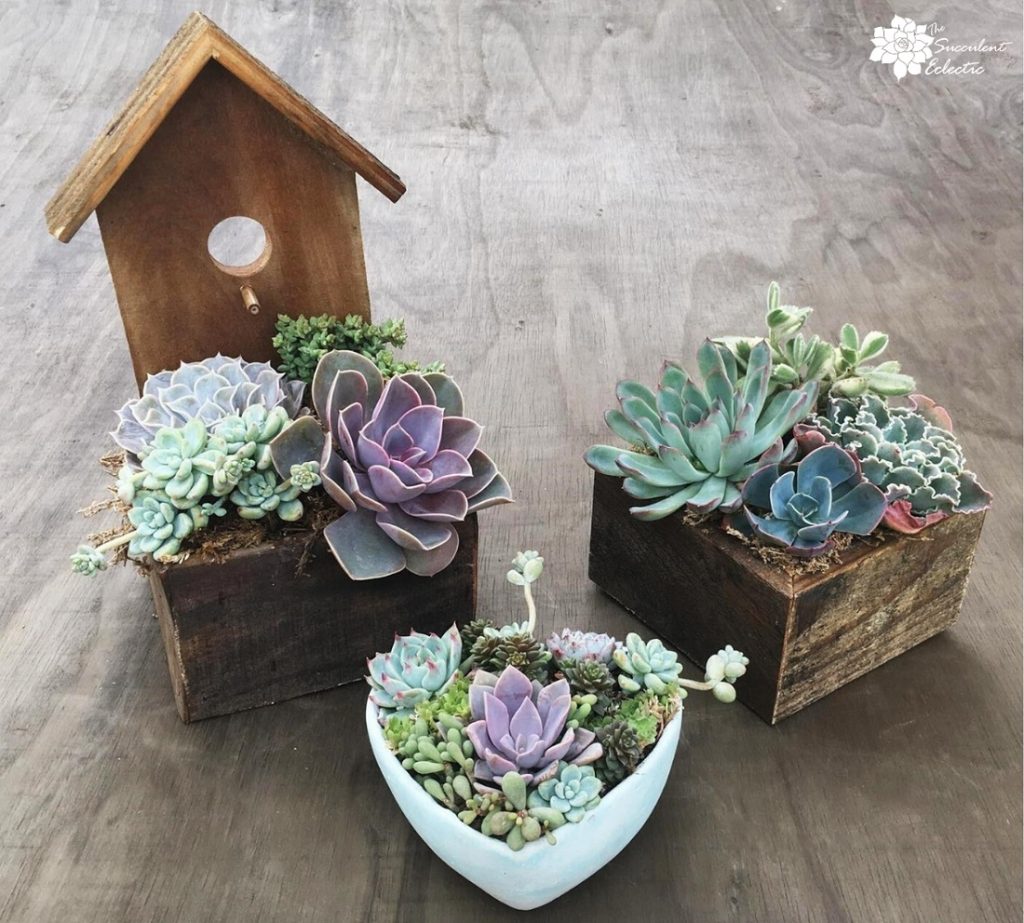
In addition to drainage and soil capacity, the best succulent containers provide additional benefits to your plants. They insulate the root zone, protecting it from wide temperature swings. It helps to keep the roots cool in the summer and warm in the winter. Another important feature of the container is how well it lets the soil (and therefore the plant’s roots) to breathe. While the soil will take in oxygen through the surface of the soil, some containers, like wood and terracotta, also allow some air to pass through the walls of the pot, improving the soil’s ability to breathe. A good container also provides weight, to keep tall, top-heavy plants and arrangements from falling over on a windy day.
Both drainage holes and pot size involve how the container is made. But it is the material the pot is made from that most affects insulation, breathability and weight. There are so many choices of material! Wood, ceramic — both glazed and un-glazed — terracotta, cement, metal, glass, plastic and resin covers the vast majority of options. All have their pros and cons.
NEW Amazon ads using Bannersnack
TOOLS:
Wooden Containers for Succulents
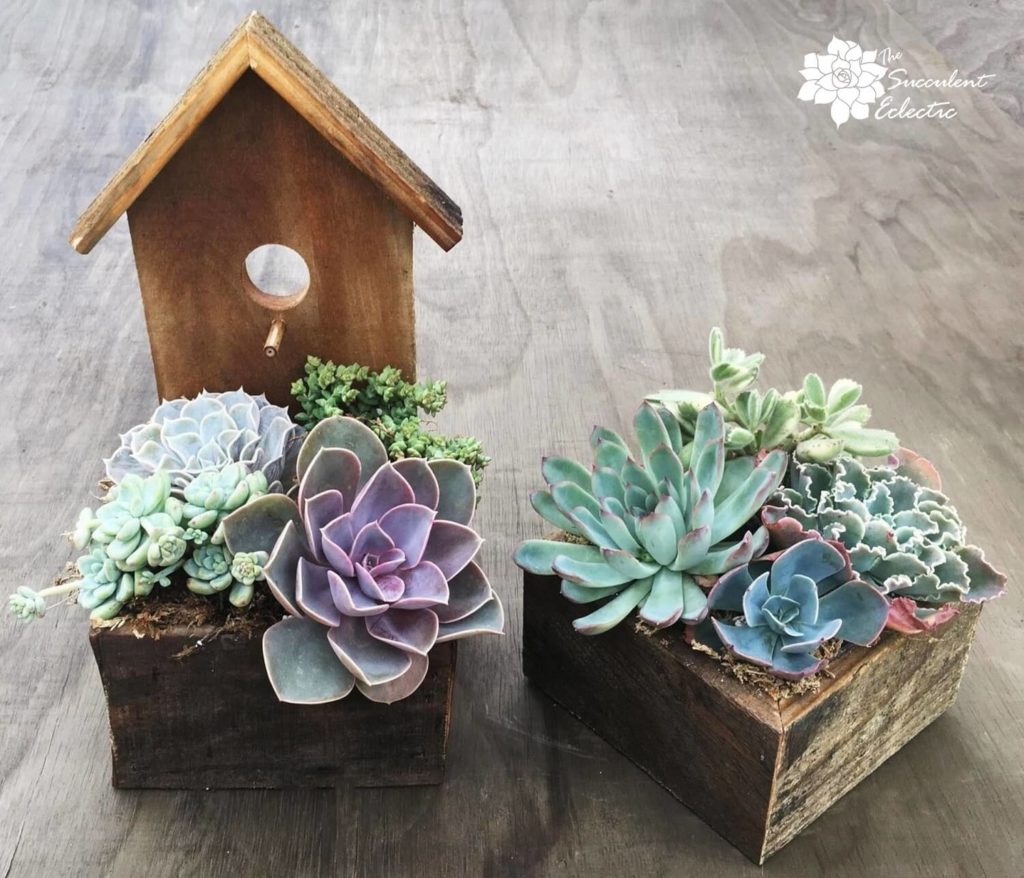
Succulent containers made of wood are great choice for the plants. They nicely insulate the root system, while allowing the soil to breathe well. Wood provides a nice weight for anchoring your plants even in a stiff breeze. In terms of promoting the health of your plants, wood containers with good drainage are some of the best pots for succulents. But in time, the wood will rot away, making these somewhat short-term planters. When the wood planter is so well-lined as to completely resist rot, it will likely have lost some of its drainage capability and the air circulation qualities will be diminished.
Ceramic Pots for Succulents
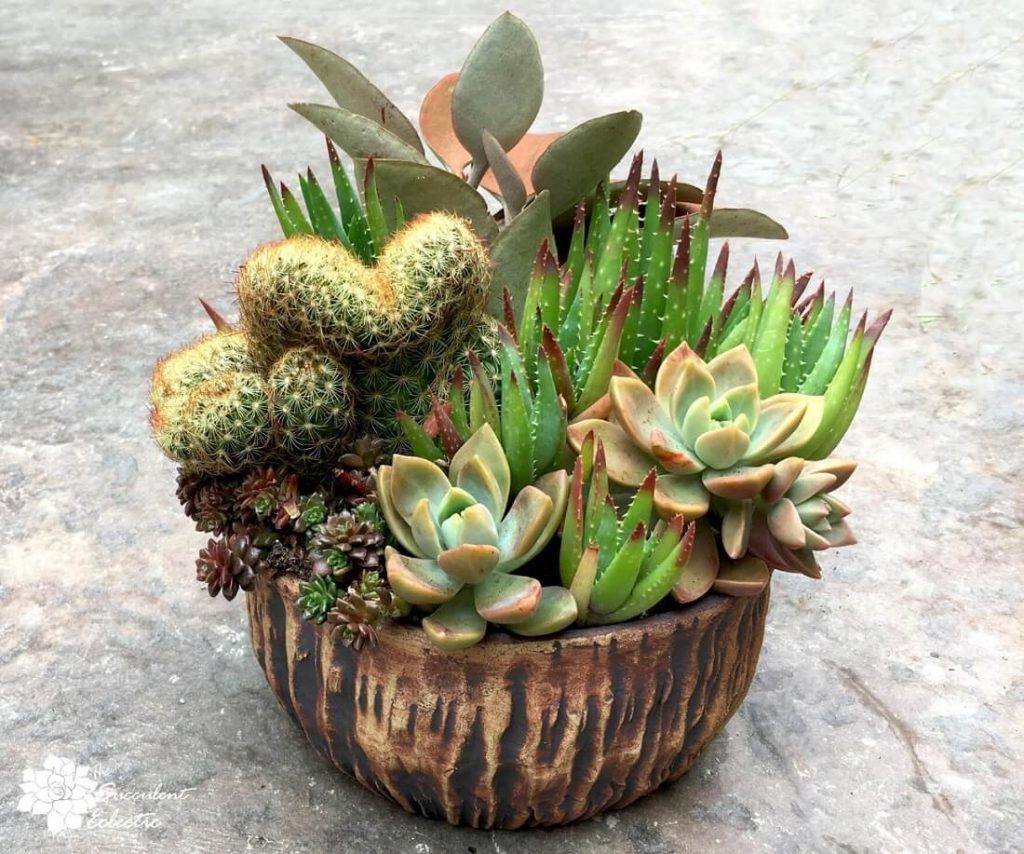
Un-glazed ceramic pots with drainage are a favorite for planting succulents. While the insulating properties of ceramic are not as strong as wood, ceramic does provide decent insulation for the roots. I am stressing un-glazed here, because like traditional terracotta pots, unglazed clay and ceramic pots allow the soil to breathe well. Glazed ceramic pots do not offer good breathability. Ceramic and terracotta are heavy for their size, so they provide a sturdy anchor for your plants. Unlike terracotta, ceramic pottery comes in a wide array of colors and shapes to complement the succulents or your decor.
The downside to ceramic or terracotta pots is that they are somewhat fragile. But unless or until they are broken, ceramic pots are among the best succulent pots and they last for many years.
Cement Pots for Succulents
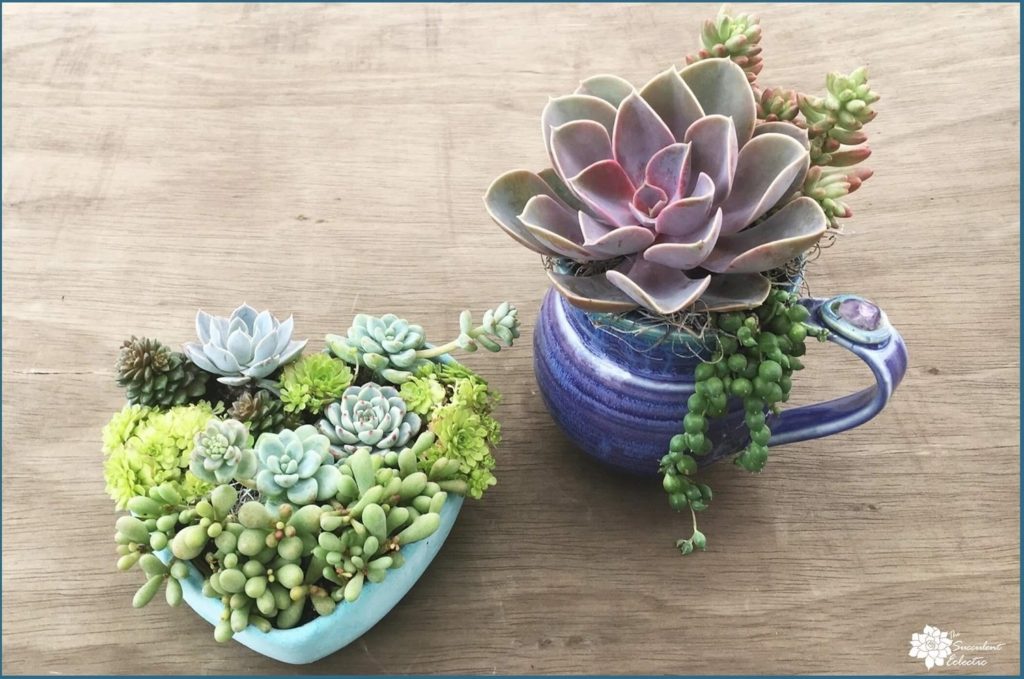
Cement containers are growing in popularity. Like wood planters, they are easy and affordable for the home-gardener to make. They are very heavy, making larger pots difficult to move, though they do great for the plant. Cement is less porous to air than un-glazed ceramic, terracotta or wood, but more so than glazed ceramic.
Metal Pots for Succulents
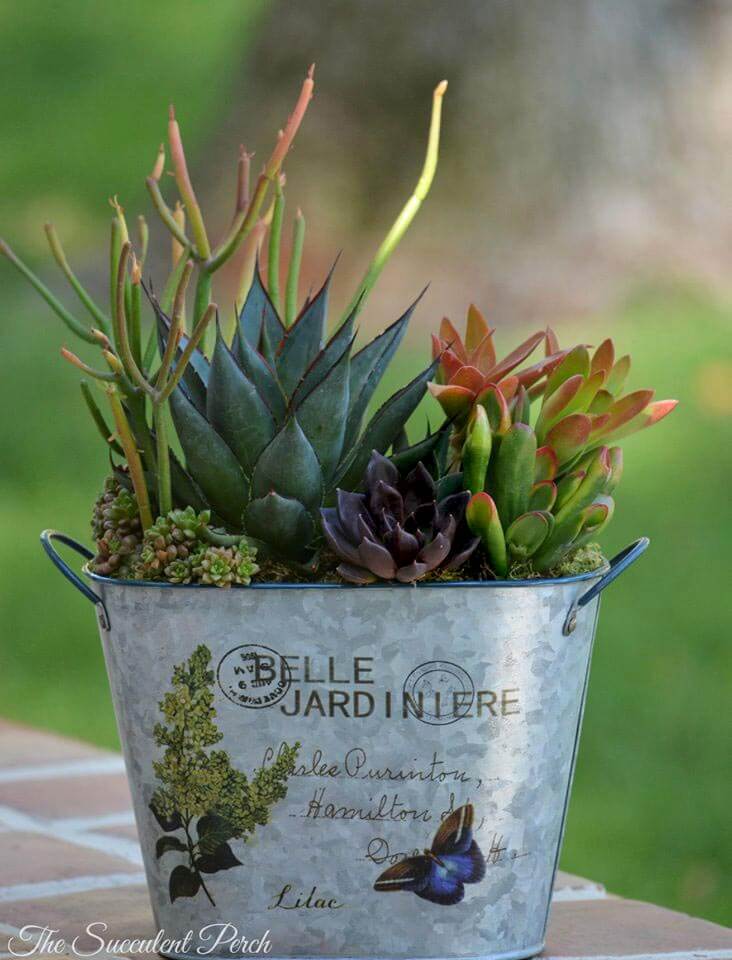
Metal pots come in a wide range of shapes and colors. Many, like this galvanized pail are pretty light-weight. If the pot is large enough to hold more soil, that will compensate for the lightweight nature of the pot. But the metal is not breathable, and it is poorly insulated. The metal heats up in the hot summer sun, and transmits the cold right to the roots in winter. When using a metal pot, it is best to keep it out of the direct sun, otherwise, the heat can literally cook the roots of your plant. Also avoid metal pots in cold climates where you’ll leave the pot outdoors over the winter.
While metal pots are not ideal for succulents, with care, they can work very well. And they are undeniably charming. This beautiful succulent arrangement and photo were done by Cindy Davison of The Succulent Perch.
Glass Bowls for Succulents?
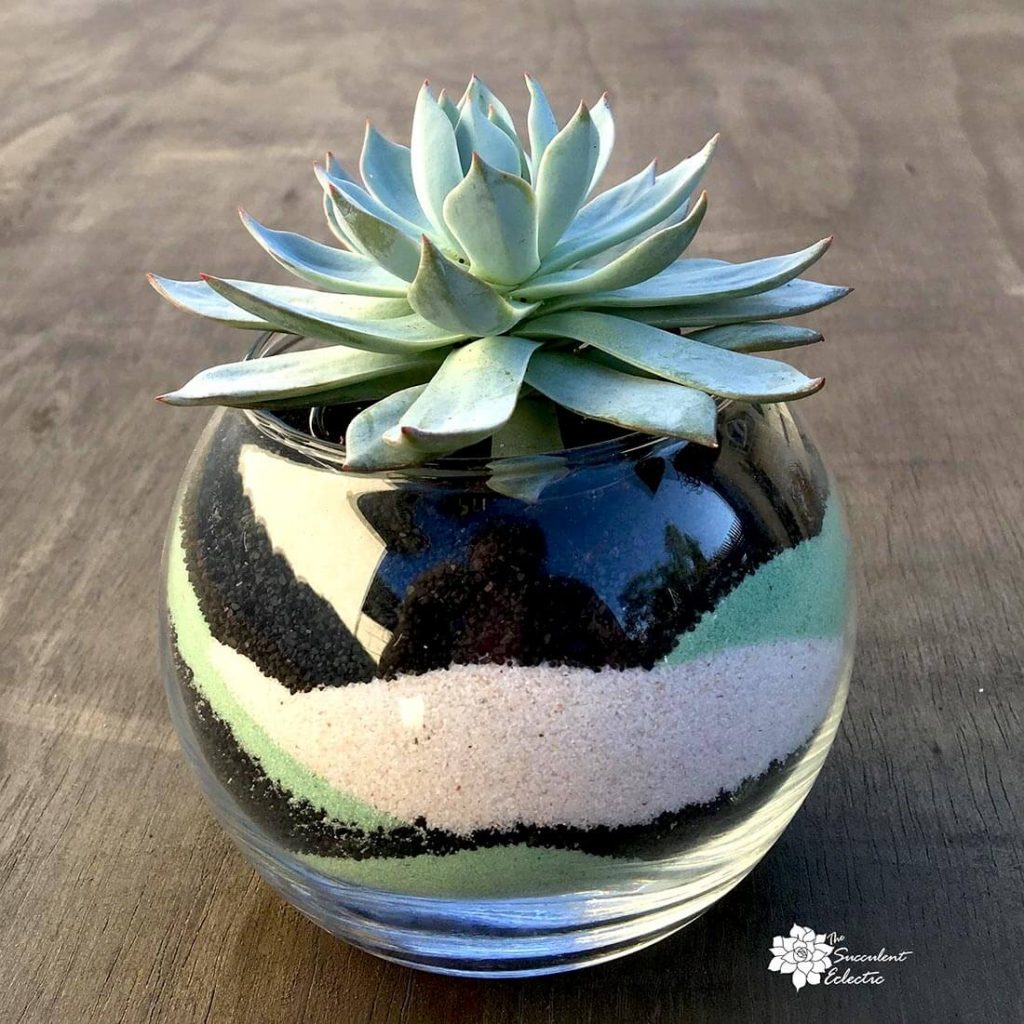
There is no denying that planting in glass bowls for succulents is a beautiful look. And you can do cool things like this sand art to enhance the plant. Of course, glass does not breathe, and it is more breakable than ceramic. It does not insulate well. But the biggest concern is the lack of drainage. While you can easily work around a pot without a breathable material or with poor insulation, I highly recommend you always use a pot with good drainage, until and unless you are prepared to lose your plant. It can be done! But it is harder, and some of your succulents will die.
Plastic Pots for Succulents
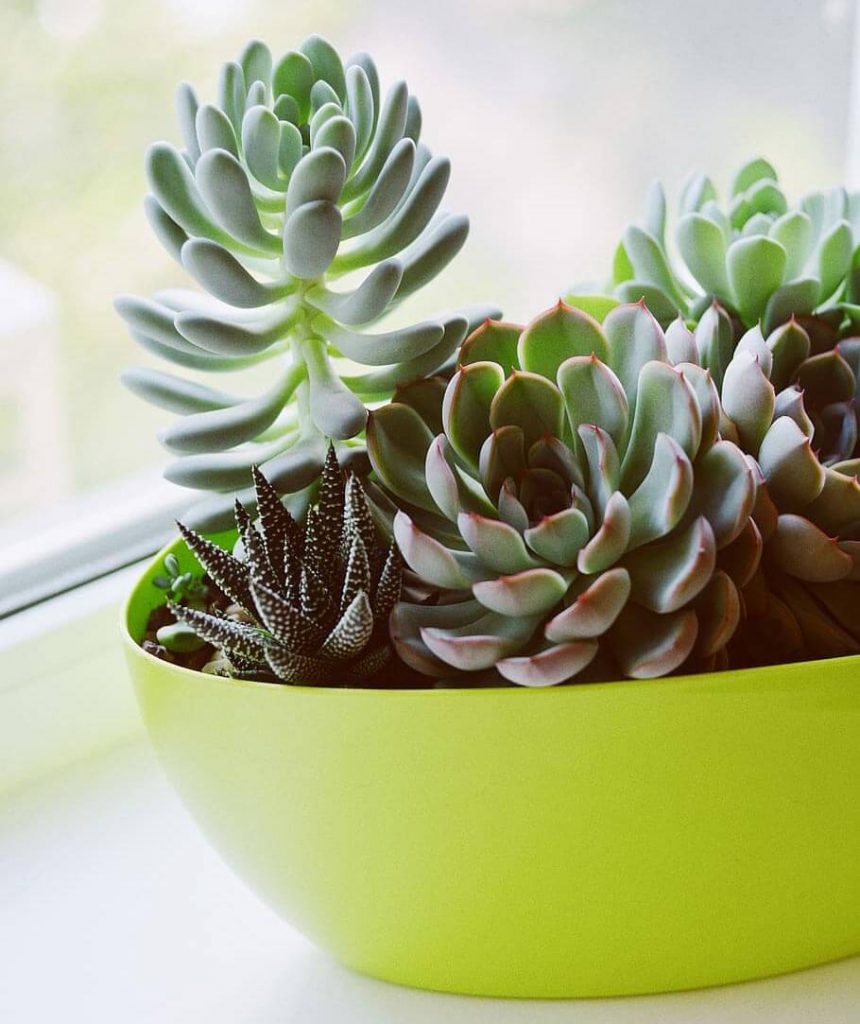
Plastic pots for succulents come in a wide range of colors, shapes and styles. Variability and durability are the strengths that plastic pots offer. They are not breathable and are quite lightweight. They do not offer much in the way of insulation, though they are better than metal. But they don’t break and it’s easy to find plastic pots with good drainage and a color that complements either your plants, your decor or both.
Resin Succulent Planters
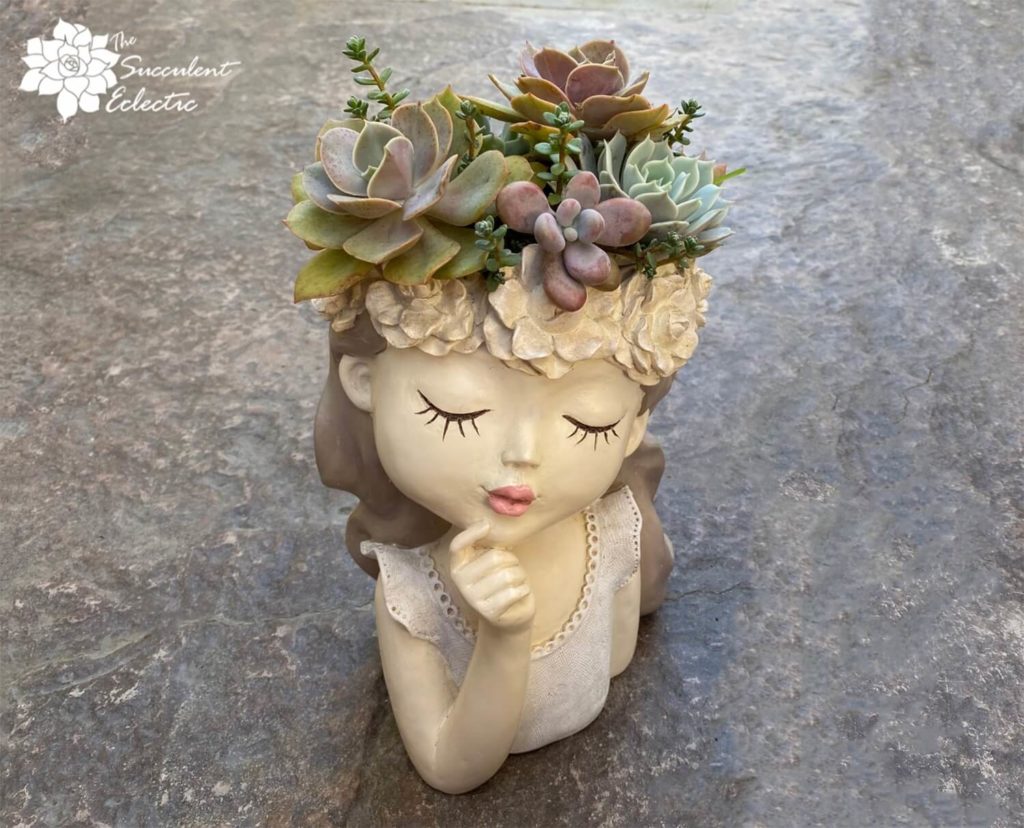
Like plastic pots, resin planters are an affordable option that comes in many shapes and colors. It is not as lightweight as plastic, nor quite as durable. Resin often is made to look like wood or ceramic and it tends to be sturdier than ceramic. Resin provides pretty good insulation for the root zone of your plants, but it does not breathe. However, it can take many fun and whimsical forms like this young girl head planter that I filled with succulents. And I love the look! 🙂
As you can see, the many types of succulent containers each have their own pros and cons. While the very best succulent pots have ample drainage, are the right size for your plant, allow the soil to breathe, are substantial in weight and offer good insulation to the roots — not all of these properties are necessary for your plants to thrive.
If you are new to succulents or struggling to keep a specific plant healthy, choose a succulent container with as many of these qualities as possible. Arrange them in order of priority like this: Drainage is most important. Always use a pot with good drainage. Next is the proper size relative to your plants. Then, a breathable material. If the pot will be outdoors, insulation is important. If the plant will grow large or be set on a shelf or on top of a wall, the weight of the pot is important.
Coordinate Succulent Pot with Plants
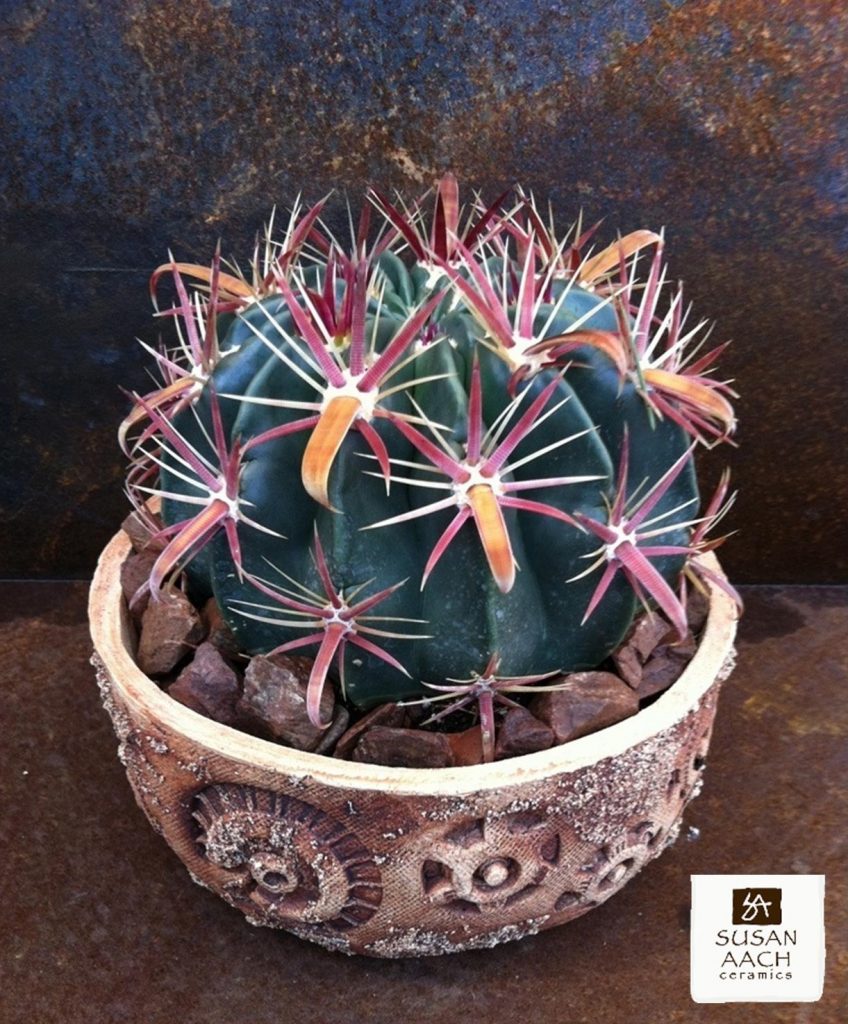
Some succulent growers have elevated the pairing of plant and pot to an art form.
Once you’ve seen to the health and well-being of your plant(s), it’s time to consider the aesthetics! Consider choosing a pot that enhances the beauty, the color, shape and/or texture of your succulents. This beautiful example from Susan Aach pairs a Ferocactus latispinus with mauve spines with one of her extraordinary, handmade ceramic pots that echoes this color. She further enhanced the plant by choosing a chunky top dressing that coordinates with the pot and the plant. The thoughtful selection of plant, pot and top dressing makes this simple cactus look so important.
Now, you know everything you need to consider when choosing the best succulent pots! I know, it’s a lot of information, but you’ll find it easy to navigate the options to find the perfect containers for your succulents. Have fun!

P.S. For more information about all things succulent, please subscribe to The Succulent Eclectic. You’ll receive my FREE e-course, 7 Steps to Succulent Success! Thanks!
P.P.S. Why not join my Facebook Group for succulent lovers? We talk about succulent care, propagation, succulent identification, and design. It’s a warm and welcoming group that would love to meet you!
